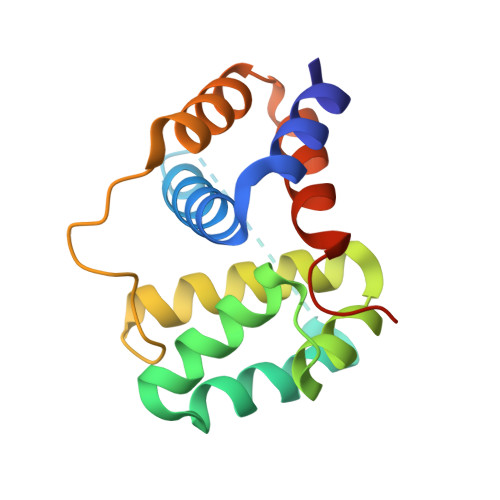PHOTOSYNTHESIS. A 12 angstrom carotenoid translocation in a photoswitch associated with cyanobacterial photoprotection.
Leverenz, R.L., Sutter, M., Wilson, A., Gupta, S., Thurotte, A., Bourcier de Carbon, C., Petzold, C.J., Ralston, C., Perreau, F., Kirilovsky, D., Kerfeld, C.A.(2015) Science 348: 1463-1466
- PubMed: 26113721
- DOI: https://doi.org/10.1126/science.aaa7234
- Primary Citation of Related Structures:
4XB4, 4XB5 - PubMed Abstract:
Pigment-protein and pigment-pigment interactions are of fundamental importance to the light-harvesting and photoprotective functions essential to oxygenic photosynthesis. The orange carotenoid protein (OCP) functions as both a sensor of light and effector of photoprotective energy dissipation in cyanobacteria. We report the atomic-resolution structure of an active form of the OCP consisting of the N-terminal domain and a single noncovalently bound carotenoid pigment. The crystal structure, combined with additional solution-state structural data, reveals that OCP photoactivation is accompanied by a 12 angstrom translocation of the pigment within the protein and a reconfiguration of carotenoid-protein interactions. Our results identify the origin of the photochromic changes in the OCP triggered by light and reveal the structural determinants required for interaction with the light-harvesting antenna during photoprotection.
Organizational Affiliation:
MSU-DOE Plant Research Laboratory, Michigan State University, East Lansing, MI 48824, USA.















